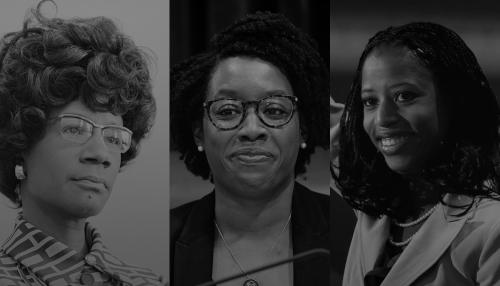In an historic election year that saw the first African American and first Asian American woman elected vice president of the United States, the first woman nominated for treasury secretary, and the first openly gay man nominated to a cabinet position, yet another first was announced this Thursday: Rep. Deb Haaland (D-N.M.) as the nominee for secretary of the interior. If confirmed, she will become the first Native American to hold a cabinet position, and will be the second-highest-ranking enrolled Native American ever to serve in the federal government.
While the secretary of the interior may not be as high-profile as other cabinet offices, the position is enormously consequential for many people’s lives. Not the least among these are the Indigenous peoples of the United States, including the nation’s 574 federally recognized American Indian and Alaskan Native communities.
The Department of the Interior has oversight of federal lands and waterways as well as the plants, animals, and natural resources located there. The department also manages the U.S. government’s relationship with Native American nations via the Bureau of Indian Affairs. That bureau has a notorious history: stripping ownership of tribal reservation lands under the Dawes Act, instituting Indian boarding schools, and carrying out the Indian Termination Era. In more recent years, the bureau has generally worked toward expanding the self-governance and economic activities of tribal governments through the administration of policies such as the Indian Self-Determination and Education Assistance Act, which allows tribes to administer their own programs and services on reservation or village lands.
Rep. Haaland’s nomination marks a turning point in valuing the experiences, knowledge, and leadership of Native American nations, which would have been unimaginable in previous presidential administrations. In particular, Rep. Haaland possesses a unique capability and perspective for this position: She’s from a state with a range of Native American reservations, from the Navajo Nation to the Pueblo communities (she is a citizen of the Laguna Pueblo); she was the chairwoman of her tribal economic development corporation; and she supported efforts at Standing Rock to preserve tribal sovereignty and protect the natural resources threatened by the proposed oil pipeline in 2016. All of this will be important to change the direction of a department that has often found its stewardship of public lands and waters challenged by politically empowered interest groups, and that will likely encounter sharp resistance to repatriating tribal lands—a priority for Native Americans.
While Native American issues have never fallen cleanly along partisan lines, the Trump administration was perhaps the most hostile presidency to Native Americans in the past half-century. Over the last four years, the administration has taken a variety of actions harmful to Native American communities, such as scaling back public lands like Bears Ears National Monument, destroying sacred sites for border wall construction, opening federally protected lands to drilling and mining, and creating unnecessary controversies over COVID-19 relief to tribes. And in a moment when Native American nations are trying to reclaim their homelands, the Trump Interior Department threatened to take the U.S. back to the Termination Era by disestablishing the reservation of the Mashpee Wampanoag—the first reduction of Native American reservation lands in decades.
In light of this, the nomination of an interior secretary who not only understands but has firsthand experience with the injustices Native American communities face will make a world of difference. It is also possible to envision the insights and expertise Rep. Haaland may lend to other cabinet secretaries administering crucial programs for Native American nations, such the departments of Agriculture, Health and Human Services, Homeland Security, and Veterans Affairs.
But she will face challenges. Congress continues to underfund its trust and treaty obligations to Native Americans so severely that the U.S. government itself has described it as a “civil rights crisis in our nation.” Lawmakers will also have a significant say in how much leeway Rep. Haaland has to return lands to tribes and restrict fossil fuel extraction. Meanwhile, Native American communities continue to grapple with a host of emergencies, such as the disproportionately deadly impacts of COVID-19 and the ongoing epidemic of missing and murdered Indigenous women.
So, while having an Indigenous interior secretary is a necessary condition for improving the well-being of Native Americans, it’s by no means sufficient on its own. The day-to-day challenges many Native Americans face will be impossible to overcome through just a single nomination. Nonetheless, this is a historic moment and an opportunity to move the Interior Department from a position of active harm toward Native American nations to one of mutual respect, partnership, and understanding.
Robert Maxim is a citizen of the Mashpee Wampanoag Tribe and a research associate with the Brookings Metropolitan Policy Program.
Randall Akee (Native Hawaiians) is a nonresident fellow with the Economic Studies program at Brookings and an associate professor in public policy and American Indian Studies at UCLA.








Commentary
What Deb Haaland’s historic nomination as interior secretary means for Indigenous peoples
December 18, 2020